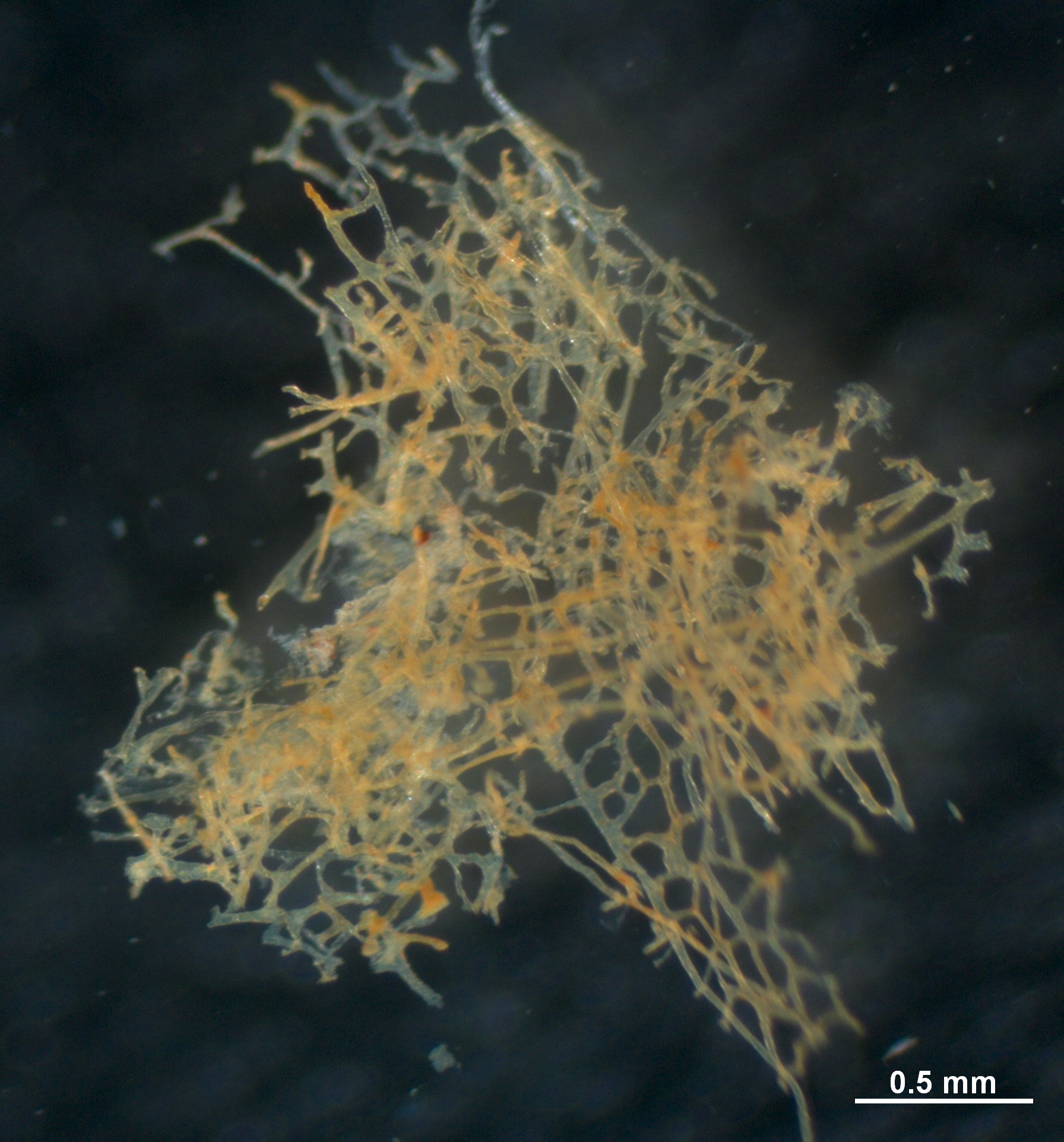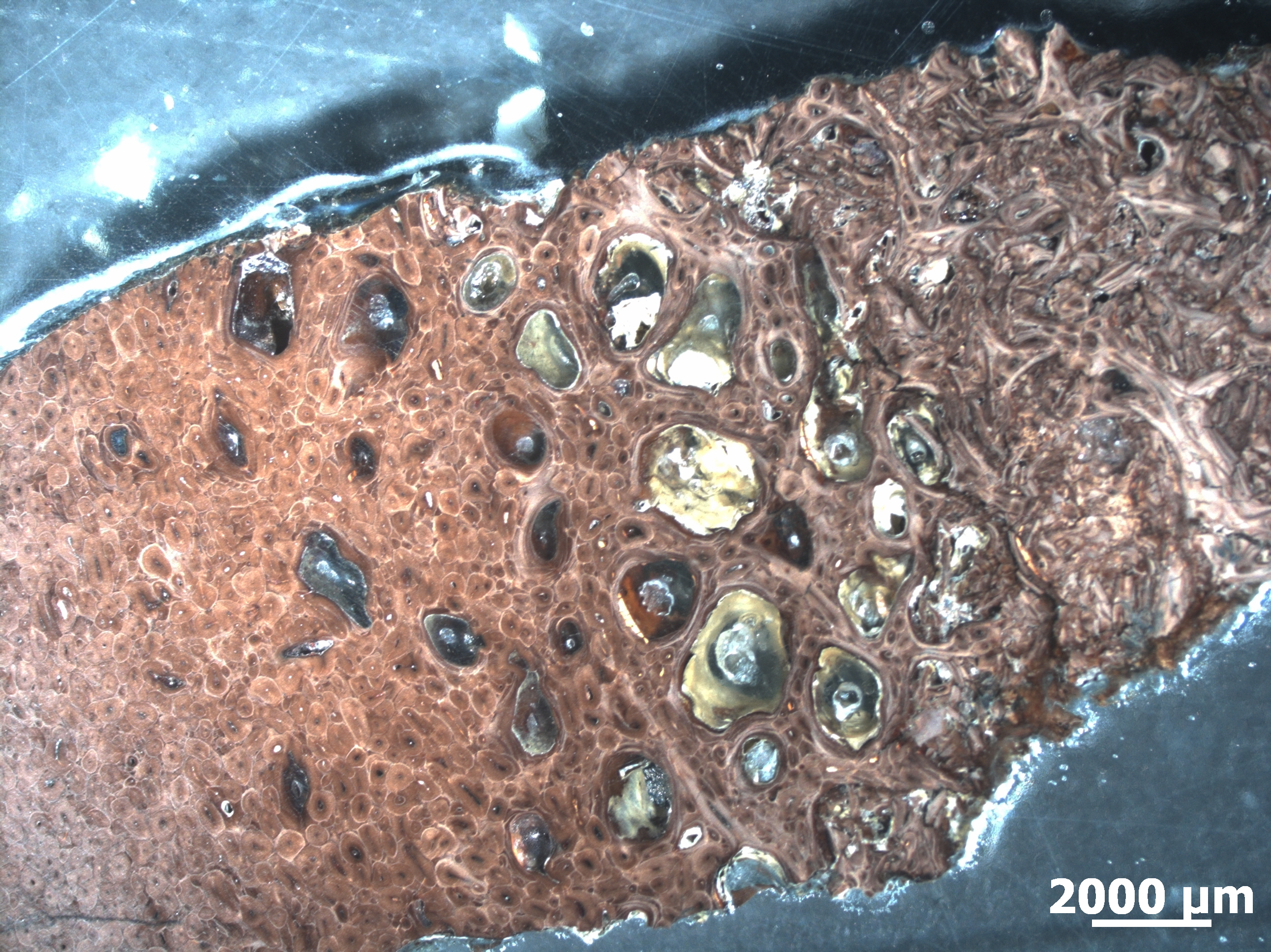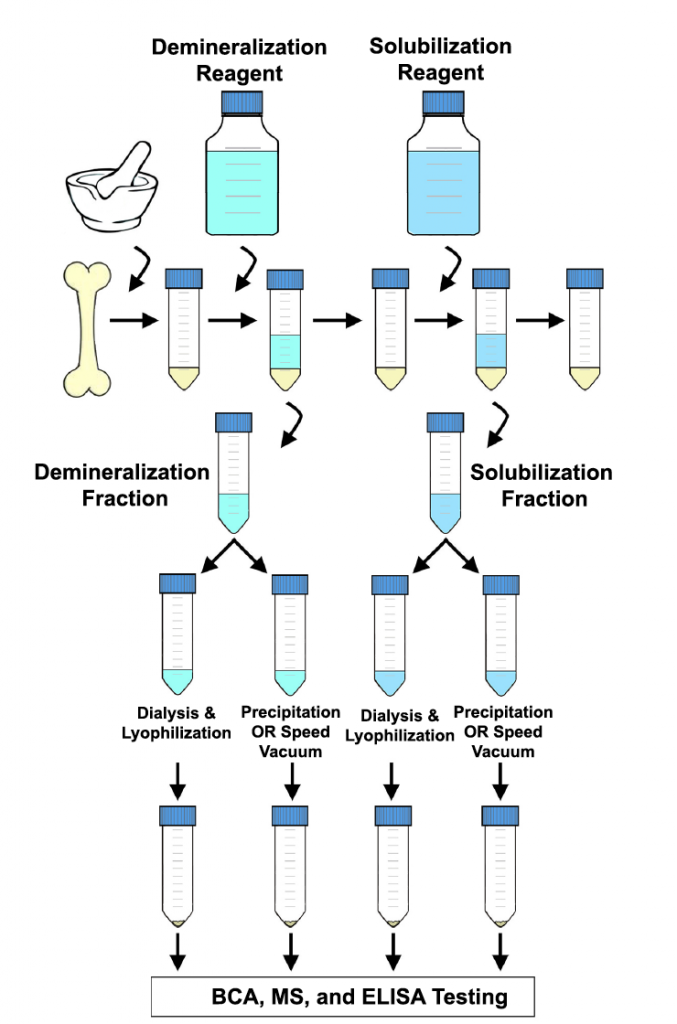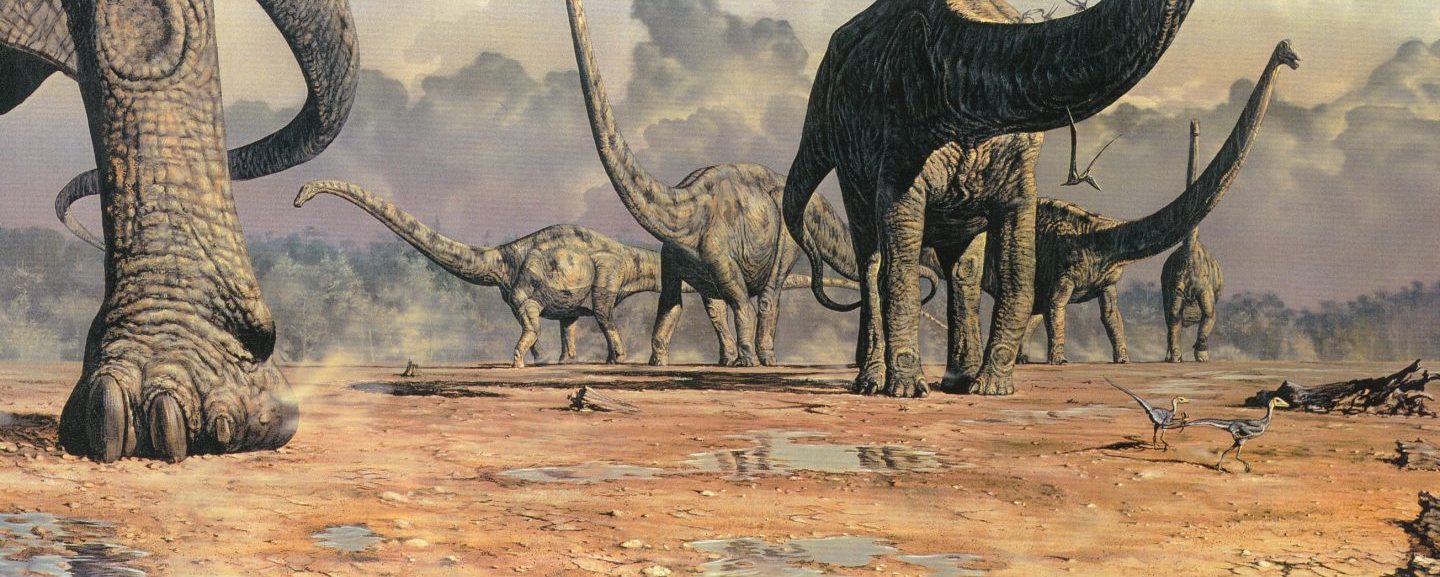Keratin in the Rock Record

Although biomineralized tissues (e.g., those mineralized during the life of the animal, including bones, teeth, shells/eggshells) have much greater preservation potential than other tissue types, keratin-containing tissues (e.g., hair, feathers, skin, nails/claws, and beaks) are represented with the next highest frequency. Skin forms a biological barrier, allowing physiological conditions to remain constant in the face of fluctuating environments. Skin-derived structures such as hair and feathers provide a wealth of information as to the appearance, function, and physiology of the animals that possess them, and represent evolutionary novelties whose occurrence allows us to determine relationships among long-dead organisms. Current topics we are focusing on include: characterization of a suite of fossil feathers from various Mesozoic avian and non-avian dinosaurs; analyses of skin components of a marine reptile from Mesozoic seas; characterization of fossil turtle remains; baleen from an ancient whale; and a comparison of three samples of skin from various hadrosaur specimens for molecular and microstructural components. We have also conducted several experiments to monitor how keratin-based tissues degrade under various conditions, to establish a baseline determining how long this process takes, and what slows or stabilizes these tissues, in an early diagenetic window.
Here is the latest publication in our investigations of ancient keratin:
Pan, Y., Zheng, W., Moyer, A.E., O’Connor, J.K., Wang, M., Zheng, X., Wang, X., Schroeter, E.R., Zhou, Z., Schweitzer, M.H. (2016). Molecular evidence of keratin and melanosomes in feathers of the Early Cretaceous bird Eoconfuciusornis. Proceedings of the National Academy of Sciences, 113(49):E7900-E7907.
DOI: 10.1073/pnas.1617168113
Altmetric it!
Blood Vessels from Fossilized Bone

We have fully characterized still-soft tissues, including flexible and transparent blood vessels, recovered from specimens of Tyrannosaurus rex and a hadrosaur, Brachylophosaurus canadensis. Our next step is to continue characterization of vessels recovered from other dinosaurs using new approaches, such as immunogold antibody binding and high resolution mass spectrometry. We also have an ongoing study with collaborators to characterize modifications to proteins in blood vessels from a second specimen of T. rex.
Here is the latest publication in our investigations of vessels from fossilized bone:
Cleland, T.P., Schroeter, E.R., Zamdborg, L., Zheng, W., Lee, J.E., Tran, J., Bern, M., Duncan, M.B., Lebleu, V.D., Ahlf, D., Thomas, P.M., Kalluri, R., Kelleher, N.L., Schweitzer, M.H. (2015). “Mass spectrometry and antibody-based characterization of blood vessels from Brachylophosaurus canadensis.” Journal of Proteome Research, 14(12): 5252–5262.
DOI:
Altmetric it!
Bone Matrix Proteins

We use high-resolution mass spectrometry to obtain peptide sequences from fossil bone. Our work in progress extends to a giant sauropod, a mosasaur (a giant ocean-going lizard) and a time series of fossil crocodiles. In addition to producing peptide sequences and analyzing them using multiple algorithms to detect phylogenetic affinities, we have also identified novel cross-links and other protein post-translational modifications which we are analyzing to determine if these play a role in preservation across geological time.
Here is our latest publication of peptide sequences from Mesozoic fossils:
Schroeter, E.R., DeHart, C.J., Cleland, T.P., Zheng, W., Thomas, P., Kelleher, N.L., Bern, M., Schweitzer, M.H. (2017). Expansion for the Brachylophosaurus canadensis collagen I sequence and additional evidence for the preservation of Cretaceous protein. Journal of Proteome Research, 16(2):920-932.
DOI: 10.1021/acs.jproteome.6b00873
Altmetric it!
Medullary Bone in Extinct Dinosaurs

This bony reproductive tissue is found only in birds among living animals. It is deposited on the inner surfaces of primarily long bones, arising from endosteal tissues. The deposition of medullary bone is triggered by the spike in estrogen that accompanies ovulation; thus its presence in fossils is an unambiguous indicator of both reproductive state and gender in the animals that possess it. However, because there are a few pathological conditions that may mimic medullary bone, its identity must be confirmed through chemistry. We have positively identified this unique tissue in Tyrannosaurus rex, not only confirming its gender, but also the close evolutionary relationship between theropod dinosaurs and birds which now extends to reproductive physiologies. We have several ongoing projects, both to identify and characterize this tissue in other fossils, and to establish a set of criteria for its identification.
Here is the latest publication in our investigations of medullary bone in extinct dinosaurs:
Schweitzer, M.H., Zheng, W., Zanno, L.E., Sugiyama, T. (2016). Chemistry supports the identification of gender-specific reproductive tissue in Tyrannosaurus rex. Nature Scientific Reports, 6:23099.
DOI: 10.1038/srep23099
Altmetric it!
Download Open-access PDF
Methods development

One of our main goals as a research lab is to develop and test methodologies that increase the robustness and validity of molecular analyses of fossils. We continue to test methods of chemical extraction that increase the efficiency and peptide coverage of MS analyses of fossil bone extracts, to make these available to the broader community. Because we do not rely on any one method, we also have been refining our immunological methods to incorporate immunogold labeling. This method is used with TEM, to localize antibody-antigen complexes with high resolution on fossil remains.
Here is the latest publication detailing some of our findings in method development:
Schroeter, E.R., DeHart, C.J., Schweitzer, M.H., Thomas, P.M., Kelleher, N. (2016). Bone protein “extractomics”: Comparing the efficiency of bone protein extractions of Gallus gallus in tandem mass spectrometry, with an eye towards paleoproteomics. PeerJ, 4:e2603.
DOI: 10.7717/peerj.2603
Altmetric it!
Download Open-access PDF
